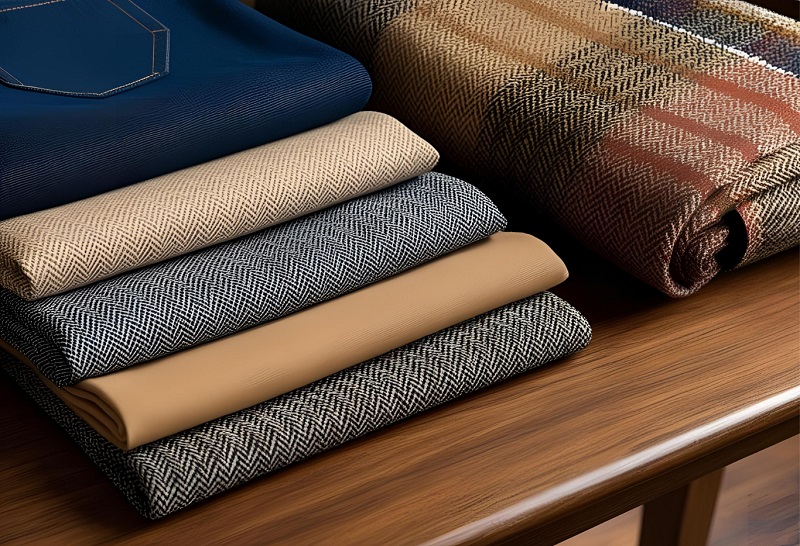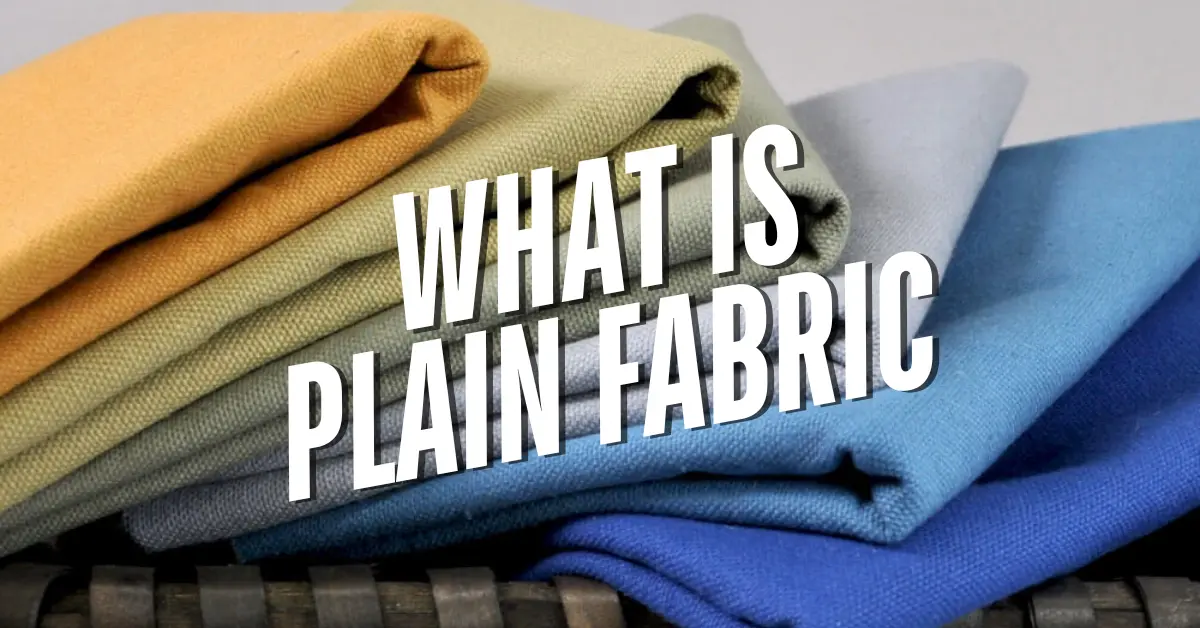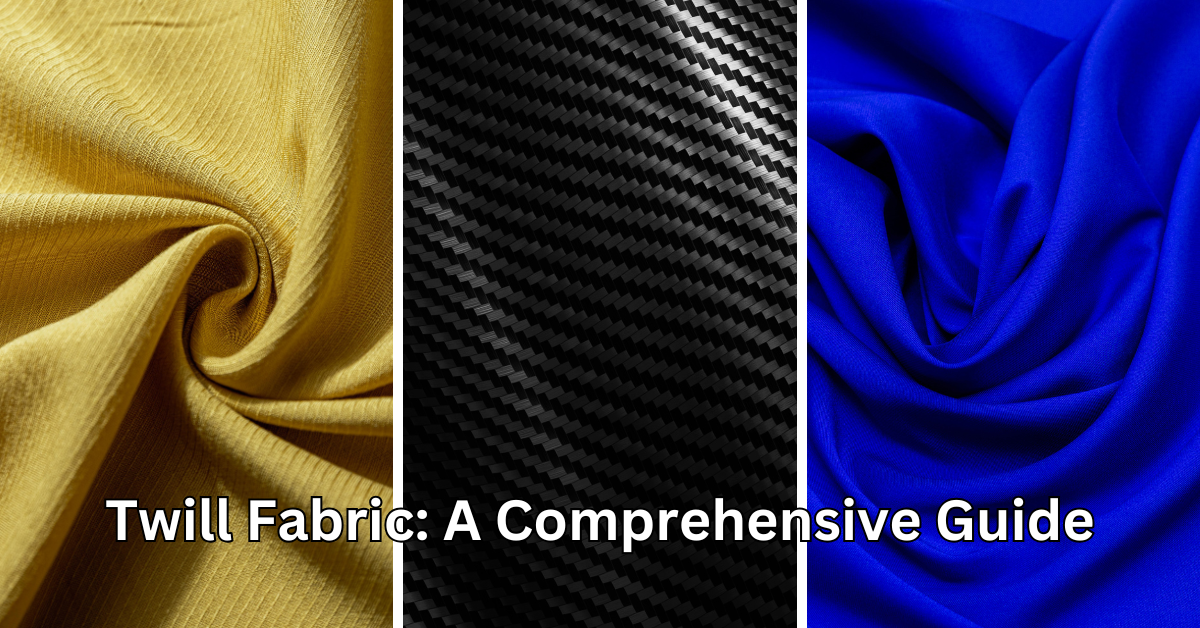Twill weave fabric examples are widely used in fashion and industrial applications due to their durability and diagonal pattern. This fabric structure provides strength, flexibility, and a smooth texture, making it ideal for jeans, suits, and upholstery. Whether selecting fabric for stylish apparel or heavy-duty workwear, knowing the right twill weave can help. In this article, we’ll explore different twill weave fabric examples, their applications, and how to care for them.
What is Twill Weave Fabric?
Twill weave is a textile pattern created by passing the weft (horizontal) thread over and under the warp (vertical) threads in a staggered pattern. This unique structure forms diagonal lines, giving the fabric its characteristic texture. Twill weaves are known for their durability and smooth finish. Unlike plain weaves, twill fabrics are stronger and more resistant to wear and tear, making them ideal for items that require strength and flexibility.
Common Types of Twill Weave Fabric Examples

Twill fabrics come in many types, each with its own distinctive pattern and use. Here are some of the most common examples:
Denim
Denim is one of the most well-known twill weave fabrics. Made primarily from cotton, denim is characterized by its sturdy, thick texture and diagonal weave. The traditional indigo-dyed warp yarns paired with white weft yarns give denim its signature blue color. Denim is a versatile fabric commonly used for jeans, jackets, and other casual wear.
Chino
Chino is another popular twill fabric, often made from cotton. This lightweight fabric is smooth and soft, making it a popular choice for trousers and khakis. Chino fabric is woven in a simple twill pattern that makes it breathable and comfortable, perfect for both casual and semi-formal occasions.
Herringbone
Herringbone is a twill weave fabric that forms a distinctive “V” or zigzag pattern, often resembling the bones of a fish. This pattern is created by alternating the direction of the twill lines. Herringbone is commonly used in suits, jackets, and outerwear, providing a sophisticated look with a textured feel.
Houndstooth
Houndstooth is another variation of twill weave fabric, recognized by its jagged check pattern. Unlike the sharp angles of herringbone, houndstooth features a broken, checkered design. This fabric is used in a variety of applications, including fashion items such as skirts, coats, and scarves, as well as home decor like upholstery.
Serge
Serge is a type of twill fabric typically made from wool. It is tightly woven, making it extremely durable and perfect for formal wear like suits and military uniforms. Serge has a smooth finish with subtle diagonal lines that are visible on the surface. Its resilience and refined look make it a popular choice for high-end clothing.
Gabardine
Gabardine is a smooth, tightly woven twill fabric, usually made from wool, cotton, or synthetic fibers. It’s known for its firm, durable texture and is often used for tailored clothing, such as trousers and coats. Gabardine’s smooth surface is resistant to wrinkles, making it ideal for professional settings and formal attire.
Tweed
Tweed is a woolen twill fabric with a rougher texture. It’s commonly used for outerwear like jackets, coats, and blazers. The unique weave gives tweed its characteristic resilience, making it perfect for colder weather. Tweed fabrics often feature intricate patterns, such as houndstooth or plaid.
Coutil
Coutil is a firm, tightly woven twill fabric used in specialty applications like corsetry. It’s made from cotton, linen, or a combination of both and is prized for its strength and structure. Coutil provides the necessary support and flexibility needed for creating supportive garments like corsets.
Glen Plaid (Prince of Wales Check)
Glen plaid, also known as Prince of Wales check, is a type of twill fabric with a distinctive checkered pattern. The pattern typically features large and small checks in alternating colors, commonly seen in suits and tailored garments. This fabric is a classic choice for professional wear due to its timeless design.
Applications and Uses of Twill Weave Fabrics
Twill fabrics are incredibly versatile, with a wide range of uses in both fashion and industry. Their durability and comfort make them a favorite in clothing, while their structure lends itself well to a variety of other applications.
Apparel
Twill fabrics are widely used in the fashion industry due to their comfort, durability, and versatility. Denim, chino, and gabardine are staples in casual and formal wear, while fabrics like herringbone and serge are often seen in suits, jackets, and trousers. The diagonal pattern of twill weaves adds an element of sophistication to clothing items, making them a popular choice for both everyday wear and special occasions.
Home Decor
The rich texture of twill weave fabrics, especially patterns like houndstooth and Glen plaid, make them excellent choices for home decor. Twill fabrics are used in upholstery, curtains, cushions, and even bedding. The durability and aesthetic appeal of these fabrics make them perfect for adding style to any home.
Industrial Uses
In addition to clothing and home decor, twill fabrics are also used in industrial applications. Heavy-duty twills, such as drill and coutil, are used in uniforms, workwear, and other items that require strength and longevity. These fabrics are designed to withstand harsh conditions while providing comfort and flexibility.
Care and Maintenance of Twill Fabrics

Twill fabrics require proper care to maintain their texture and durability. Different twill types may have specific care requirements, but general guidelines can help keep them in good condition.
General Care Tips
Most twill fabrics, like denim and chino, can be machine-washed with cold water. It’s best to avoid using bleach or fabric softeners, as these can damage the fibers over time. For drying, air drying is recommended to preserve the fabric’s structure. Ironing should be done with moderate heat, especially for wool-based twills like serge and gabardine.
Specific Care for Delicate Twills
For more delicate twills, such as herringbone and Glen plaid, dry cleaning may be the best option to preserve their unique patterns and textures. Gentle handling is key to avoiding any distortion of the fabric’s design. Always check care labels for specific instructions to extend the lifespan of these fabrics.
Conclusion
Twill weave fabrics are an essential part of the textile industry, offering a perfect balance of durability, comfort, and style. From denim to houndstooth, twill weave fabric examples serve specific purposes across fashion, home decor, and industrial applications. Exploring various twill weave fabric examples helps in selecting the right material based on function and appearance. When properly maintained, twill weave fabric examples remain reliable and long-lasting in any project. A clear understanding of different twill weave fabric examples ensures better fabric choices and improved product quality.

Manager – Fabric Technical and Sourcing/Product Development/ Sustainable Material Management.
I am a B.Sc .-educated Manager of Fabric Sourcing and Technology with extensive experience in the apparel and fashion industry. Passionate about trend analysis, fabric sourcing, and sustainable textile solutions, I thrive in fast-paced environments that demand innovation, adaptability, and leadership.
As a servant leader, I am committed to honesty, transparency, and continuous process improvement. My expertise spans fabric development, product quality management, and supply chain optimization, ensuring exceptional performance across all facets of sourcing and production.
Core Skills & Expertise
✔ Fabric Sourcing & Development – Specialized in regular and sustainable textiles (BCI, Organic, Recycled).✔ Trend Analysis – In-depth understanding of global fashion and fabric trends.✔ Product Development – Expertise in material innovation and process optimization.✔ Quality Management – Strong focus on process control, ensuring high-quality production.✔ Leadership & Problem-Solving – Solution-oriented approach to team management and decision-making.
Technical Proficiency
🖥 Software & Tools:▪ Microsoft Outlook, Excel, Word▪ PLM (Product Lifecycle Management)
🌱 Sustainable & Ethical Practices:▪ Better Cotton Initiative (BCI)▪ Organic & Recycled Fabric Management
Key Strengths
✅ Solution-Focused Leadership – Driving innovation and efficiency in fabric sourcing.✅ Quick Decision-Maker – Adapting to market shifts and production challenges.✅ Team Player with a Positive Attitude – Ensuring collaboration and productivity.✅ Strong Time Management – Meeting deadlines while maintaining quality.
Professional Achievements
🏆 Li & Fung GEM Award – Recognized for fabric sourcing and supply chain management excellence.🏆 Group CEO GEM Award – Honored for outstanding leadership and process innovation.

